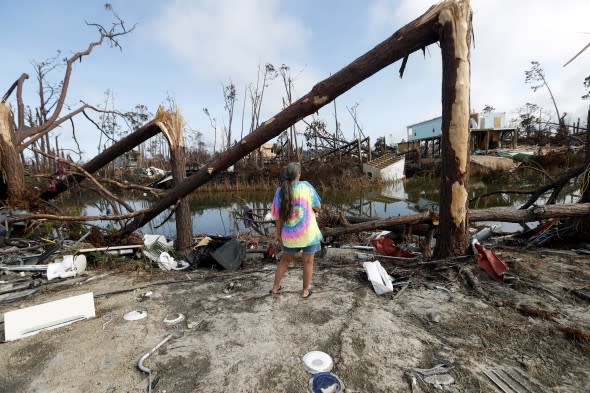The worst isn't over: Common ways people are often killed during a major storm's aftermath
A natural disaster's threats don't end once the severe weather dissipates. Research has shown that a large number of fatalities continue to occur after the worst of the storm is over.
After flooding and hurricanes, for instance, some common ways people indirectly die post-disaster include car crashes, electrocutions and cardiovascular problems, according to a 2005 study.
In 2016, researchers also examined 59 deadly tropical cyclones that occurred over a 50-year period beginning in 1963. They found that the number of indirect deaths is almost equal to the total amount of fatalities directly linked to the storms.
The indirect death toll also surpassed that of directly related storm deaths for seven out of 10 of the deadliest hurricanes that have occurred since 2000, including Katrina, Rita and Charley.
"It's so important for people to heed the warnings, advice and requests of their local authorities, because many of those post-storm deaths can be avoided by taking some basic precautions," said Clemson University's Emergency Management Director, Sarah Custer.

Roxie Cline surveys the damage in the vicinity of her destroyed motor home in the aftermath of Hurricane Michael in Mexico Beach, Florida, Wednesday, Oct. 17, 2018. (AP Photo/Gerald Herbert)
Carbon monoxide poisoning
Custer noted that one of the leading causes of post-storm deaths is poisoning from the colorless, odorless and tasteless carbon monoxide.
"People are bringing generators indoors, it's essential never to do that, even if it's near an open window, door or vent," Custer said.
A 2016 study conducted by Edward Rappaport and B. Wayne Blanchard found that generator misuse led to 70 carbon monoxide poisoning-related deaths among the hurricanes they examined. The duration and aftermath of 2012's Hurricane Sandy claimed the most lives in a single storm - 15 - due to accidents related to carbon monoxide poisoning, the study found.
House fires
The 2016 study showed that house fire deaths from misuse of candles or other sources of open flames accounted for 3 percent of the Atlantic hurricanes examined between 1963 and 2012, with 40 people dying in residential fires.
"[These kinds of deaths] have reduced some in the last 5-10 years, but it's still important to note that it's always better to use a flashlight instead of a candle to light your home [post-storm]," Custer said.
Electrocution
Sixty-five people were electrocuted following hurricanes studied during a 50-year period, the study showed.
"Electrocutions are pretty common, especially among people trying to work their generators without being fully educated on how they work," Custer said, adding that backfeeds of a line can also injure and/or kill utility workers trying to restore power.
Cardiovascular failure
Chronic heart problems can be a major killer after a storm for those whose conditions are worsened by the stress of the situation and who can't receive the help they need.
"People unfortunately tend to have more strokes and heart attacks post-storm," Custer said.
Deadly falls, chainsaw accidents
While in the post-storm recovery phase, a number of people have fallen to their deaths or accidentally been killed by chainsaws as they attempted to clear debris.
Almost 50 people fell to their deaths after the storms examined in the 2016 study, most of which happened in or near the victims' homes.
"We all run out after a storm to help our friends and neighbors cut up the trees, but it's important that people have the proper safety gear and training on how to use chainsaws, because chainsaw deaths are quite common, unfortunately, post-storm," Custer said.
Staying safe after a storm
When returning home after an evacuation, experts advise heeding all road safety signs and not driving around barricades, even if they're not completely blocking off a road.
"If there's a barricade, do not enter that area, and even if it looks like there's a small amount of water, don't drive through it," Custer said. "It just takes a few inches to pick up and move your car."
It's also best to avoid damaged buildings until a professional examines it and gives the go-ahead to enter it safely, she said.
Being mindful of electrical hazards can also save lives.
"With all of that equipment, if it's wet or near water, it's important that the main breaker is off and you've got electricians there to tell you if it's safe," Custer said. "If there's standing water, don't use anything electrical there, and don't connect your generators to circuits without having all of the correct devices."
Working in wet areas also poses the risk of mold exposure, in which case people are advised to wear respirator masks and prevent their skin from coming into contact with affected materials with gloves and sturdy, water-resistant boots.
"Listen to local authorities," Custer said. "If they're saying ‘do not return,' it's to keep you safe."
For more safety and preparedness tips, visit AccuWeather.com/Ready.

